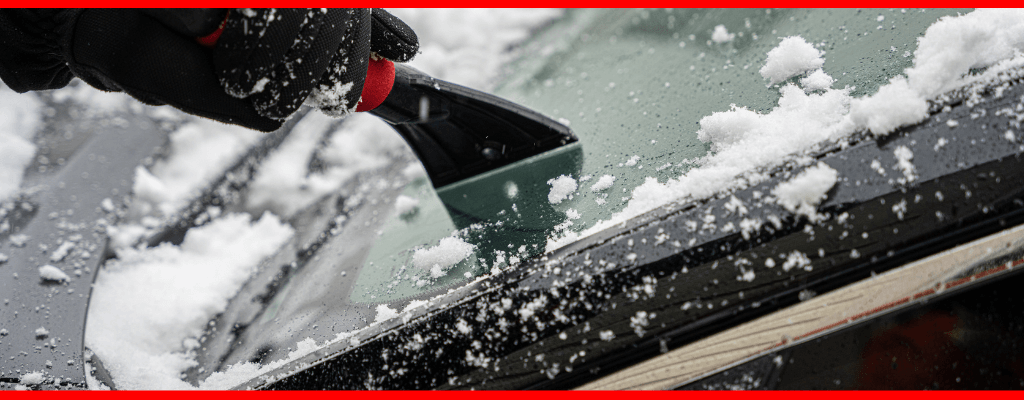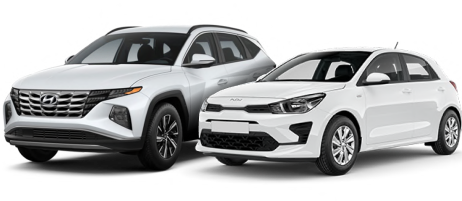
Share
Driving in snow – how to stay safe
The ‘Beast from the East’ is back.
Storm Darcy has swept across the UK, bringing with it a bitter easterly wind, freezing temperatures and a thick blanket of snow – all of which is causing major disruption on the roads. According to the AA, the extreme weather is causing ‘treacherous driving conditions’ and accidents are highly likely.
Most people in the UK have very little experience of driving in wintry conditions. So, to help, here we’ve rounded a few tips on how to drive in snow and keep you and other road users safe.
Tips for driving in snow
Before you set off:
- Plan ahead
Your usual route may not be accessible. So, before you head out, use a route planner and take a look at the local news to check for any accidents or roadblocks. You should also consider which roads are more likely to be cleared and gritted. Try to avoid areas that are exposed to the elements (i.e. country roads) and always take the safest route possible.
- Allow extra time
The key to driving in the snow is to take things slow. If you need to be somewhere for a certain time, factor in the weather and set off at least 30 minutes earlier than usual.
- De-ice your car
It is a legal requirement to ensure all of the glass on your car is clear. Use a scraper to remove snow and ice from the windscreen and allow enough time for it to completely de-mist. You should also remove any snow from the roof the vehicle, as this can fall onto the windscreen and block your view, and clear the lights (front and back) before you set off.
- Wear suitable clothing
Wear 2-3 layers of warm winter clothing (just in case you get stuck and have to leave your car) and choose dry, comfortable shoes that won’t slip on the pedals.
- Pack a ‘winter driving’ kit
It may seem a little OTT, but try to prepare for all eventualities. Remember to check your fuel level and ensure you have at least a quarter of a tank in case of an unexpected delay. Fully-charge your mobile phone and sat-nav. And pack a few ‘survival’ essentials, including a first aid kit, blanket, spade, torch, de-icer, snacks and water.

The journey itself:
- Second gear
If driving in snow, you should always pull away in second gear, easing your foot gently off the clutch. This will help to avoid wheel spin. Some cars have a ‘winter mode’ which does the same job. So, before starting your journey, check whether your car has this function.
- Gentle acceleration
Slow and steady wins the race. Accelerate and manoeuvre the car very gently, using low revs as much as possible and staying in a higher gear than usual to improve your control.
- Keep a safe distance
Stopping distances can be up to 10 times longer when it’s icy. Therefore, you should try to maintain a bigger gap than usual between you and the car in front. This is particularly important if you’re driving uphill, as you will need to maintain a constant speed until you reach the top.
- Maintain visibility
For any kind of winter driving, headlights are essential – but they’re even more important if it’s snowing. Put on your dipped headlights. Then, if visibility drops below 100 metres, switch to your fog lights. Just remember to turn these off once visibility has improved.
- Never tailgate
Tailgating is dangerous (and annoying!) at the best of times, let alone when it’s snowing. Stay as far back as possible and avoid the wheel tracks of other vehicles. Compressed snow is likely to be more slippery than fresh snow, particularly if the road hasn’t been gritted yet.
If you encounter a problem:
- Steer wisely
If you lose control of the car and start to skid, it can be scary. But try to not panic. You should never let go of the steering wheel or stamp your foot on the brakes. Just steer gently into it. For example, if the rear of the car is sliding right, steer right to help correct it.
- Stop
If you get stuck in the snow, don’t continue to accelerate. Moving the wheels will only dig you deeper in. Instead, try to clear the snow using a shovel. Then, put a sack or rug in front of the driving wheels to give the tyres some grip. Sand or gravel also work just as well.
- Stay in the car
Heavy snow can make it very easy for you to become disorientated. So, if you’re waiting for roadside assistance, stay in your car. You may also wish to hang something brightly coloured (such as a spare coat or blanket) from the window, to let others know you are there.

Driving our hire vehicles in the snow
Need to hire a car, but worried about driving it in the snow?
Here at PSD, all of our cars and vans for hire are well-maintained and checked regularly. Before handing over the keys, we thoroughly clean the windows and inspect the lights, tyres, wipers etc. to ensure they’re in full working order. Our vehicles are all set for winter driving. And by sticking to the tips outlined above, you can ensure your essential journey is as smooth and safe as possible.
For further advice on how to drive in the snow – or help choosing a suitable rental vehicle for your requirements – please don’t hesitate to get in touch. You can either give us a call on 0345 222 1022 or send an email to info@psdvehiclerental.co.uk and we’ll get back to you as soon as possible.














